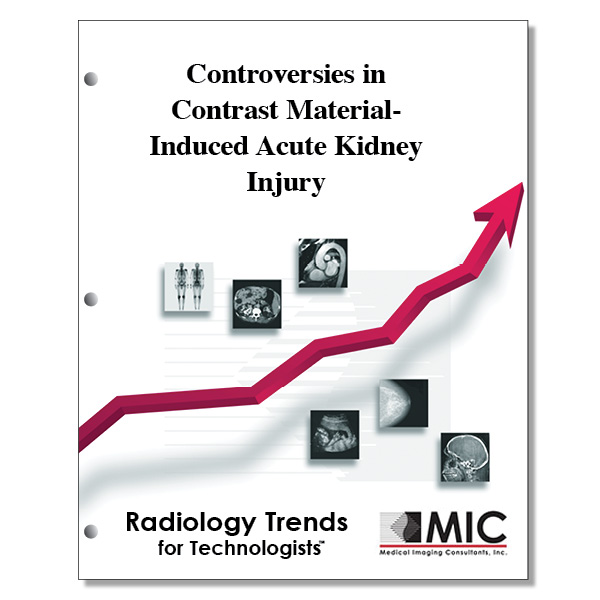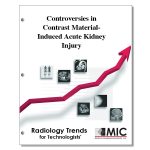

Controversies in Contrast Material-Induced Acute Kidney Injury
An investigation that questions the incidence, severity, and correlation of acute kidney injury caused by intravascular iodinated contrast material.
Course ID: Q00505 Category: Radiology Trends for Technologists Modalities: Cardiac Interventional, CT, Radiography, Vascular Interventional1.25 |
Satisfaction Guarantee |
$24.00
- Targeted CE
- Outlines
- Objectives
Targeted CE per ARRT’s Discipline, Category, and Subcategory classification for enrollments starting after February 17, 2023:
Cardiac-Interventional Radiography: 1.25
Patient Care: 1.25
Patient Interactions and Management: 1.25
Computed Tomography: 1.25
Patient Care: 1.25
Patient Interactions and Management: 1.25
Magnetic Resonance Imaging: 1.25
Patient Care: 1.25
Patient Interactions and Management: 1.25
Radiography: 1.25
Patient Care: 1.25
Patient Interactions and Management: 1.25
Registered Radiologist Assistant: 1.25
Patient Care: 1.25
Pharmacology: 1.25
Radiation Therapy: 1.25
Patient Care: 1.25
Patient Interactions and Management: 1.25
Vascular-Interventional Radiography: 1.25
Patient Care: 1.25
Patient Interactions and Management: 1.25
Outline
- Introduction
- Meta-Analysis
- Recent Studies
- Ongoing Controversies
- Point-Counterpoint
Objectives
Upon completion of this course, students will:
- know how long IV iodinated contrast has been causally associated with the development of CIN
- state the number of doses of iodinated contrast administered on an annual basis
- recall the most salient criticism of existing literature in regard to human studies of CIN
- explain the need for an appropriate control group in order to properly discern causation
- list causes of contrast material-independent elevations in SCr levels that are most likely to obscure a diagnosis of CIN
- state the patient population at greatest risk of CIN
- list the studies demonstrating that the incidence of acute kidney injury in the contrast material–naive control cohorts was often significantly higher than that observed in the contrast material–exposed cohorts
- state limitations in systematic reviews of existing literature on CIN
- list the years when Davenport et al and McDonald et al published large controlled retrospective studies of post-contrast acute kidney injury after CT
- name the factors used in order to publish risk stratified results from both the Davenport et al and McDonald et al studies
- identify the study that was unable to identify a significant difference in the incidence of acute kidney injury between contrast-exposed and control groups in patients with baseline estimated GFR less than 30mL/min per 1.73m2
- list the reasons for divergent results in patients with baseline estimated GFR less than 30mL/min per 1.73m2
- state findings that provide evidence noting the incidence of CIN after intravenous iodinated contrast material administration being lower than previously suggested by other studies
- note the outcomes for the separate propensity score adjusted study performed by McDonald and colleagues
- give the sample size for Davenport et al and McDonald et al retrospective studies
- choose which study contained sensitivity analysis that demonstrated the observed findings were highly reproducible and not likely the result of anomalous logistic regression results
- list the factors that help minimize potential bias as associated with the McDonald et al studies
- discuss the limitations of retrospective studies
- list the variance factors associated with SCr level-based assays of renal function
- state the limitations inherent to measuring SCr levels
- list the measurement tools for GFR
- discern which GFR measurement tool is the most common measure of renal function in clinical work and in prospective trials
- state the most direct method of determining renal function
- recall the standard of care and essential components of CIN studies
- name the agency that confirms intravascular contrast material significantly improves diagnostic sensitivity for many serious diseases
